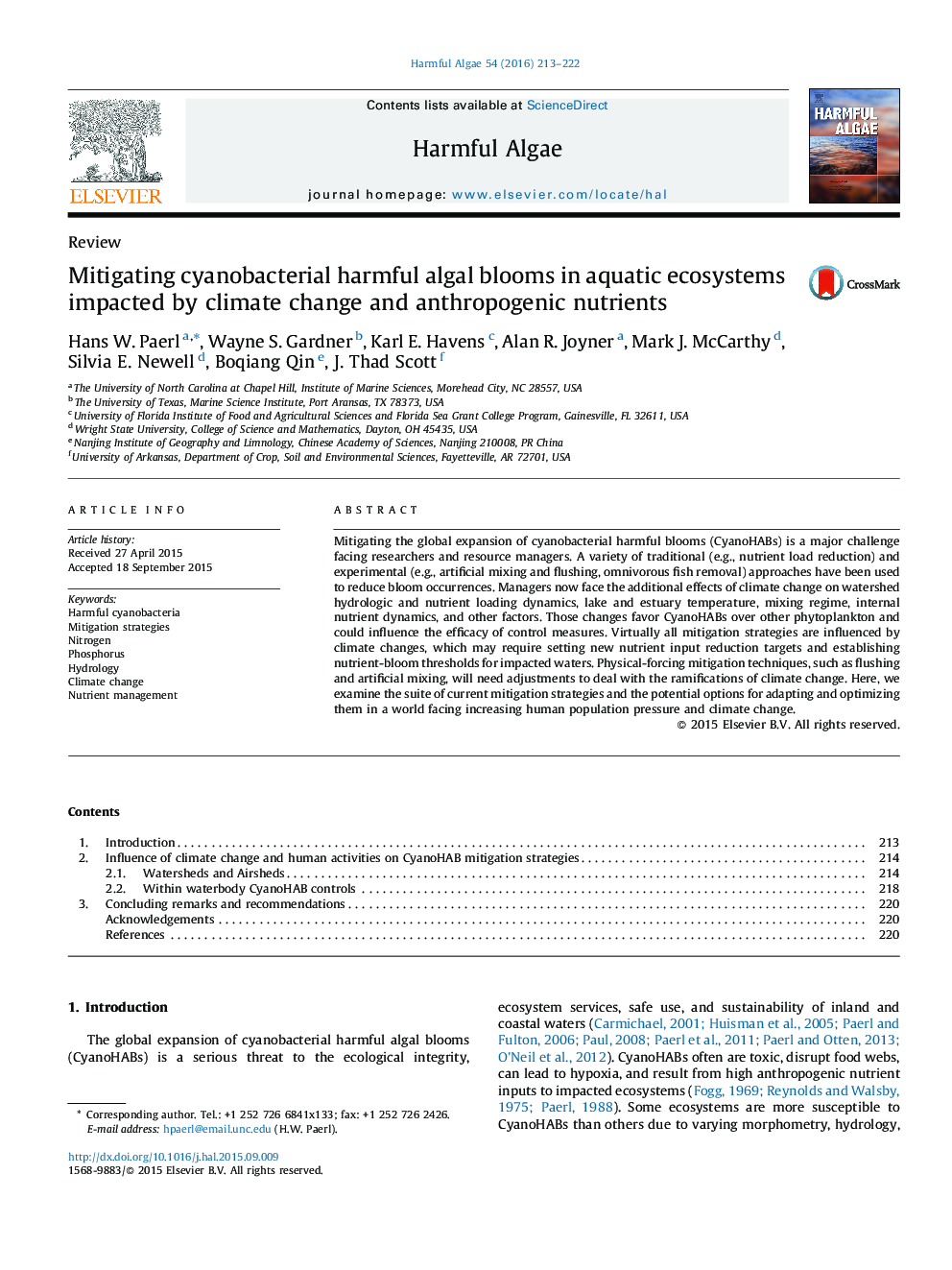| کد مقاله | کد نشریه | سال انتشار | مقاله انگلیسی | نسخه تمام متن |
|---|---|---|---|---|
| 6386148 | 1626917 | 2016 | 10 صفحه PDF | دانلود رایگان |
عنوان انگلیسی مقاله ISI
Mitigating cyanobacterial harmful algal blooms in aquatic ecosystems impacted by climate change and anthropogenic nutrients
ترجمه فارسی عنوان
ریزش گیاهان زراعی مضر سیانوباکتریایی در اکوسیستم های آبی که تحت تاثیر تغییرات اقلیمی و مواد مغذی انسان قرار دارند
دانلود مقاله + سفارش ترجمه
دانلود مقاله ISI انگلیسی
رایگان برای ایرانیان
کلمات کلیدی
سیانوباکتریای مضر، استراتژی های کاهش، نیتروژن، فسفر، هیدرولوژی، تغییر آب و هوا، مدیریت مواد مغذی،
موضوعات مرتبط
علوم زیستی و بیوفناوری
علوم کشاورزی و بیولوژیک
علوم آبزیان
چکیده انگلیسی
Mitigating the global expansion of cyanobacterial harmful blooms (CyanoHABs) is a major challenge facing researchers and resource managers. A variety of traditional (e.g., nutrient load reduction) and experimental (e.g., artificial mixing and flushing, omnivorous fish removal) approaches have been used to reduce bloom occurrences. Managers now face the additional effects of climate change on watershed hydrologic and nutrient loading dynamics, lake and estuary temperature, mixing regime, internal nutrient dynamics, and other factors. Those changes favor CyanoHABs over other phytoplankton and could influence the efficacy of control measures. Virtually all mitigation strategies are influenced by climate changes, which may require setting new nutrient input reduction targets and establishing nutrient-bloom thresholds for impacted waters. Physical-forcing mitigation techniques, such as flushing and artificial mixing, will need adjustments to deal with the ramifications of climate change. Here, we examine the suite of current mitigation strategies and the potential options for adapting and optimizing them in a world facing increasing human population pressure and climate change.
ناشر
Database: Elsevier - ScienceDirect (ساینس دایرکت)
Journal: Harmful Algae - Volume 54, April 2016, Pages 213-222
Journal: Harmful Algae - Volume 54, April 2016, Pages 213-222
نویسندگان
Hans W. Paerl, Wayne S. Gardner, Karl E. Havens, Alan R. Joyner, Mark J. McCarthy, Silvia E. Newell, Boqiang Qin, J. Thad Scott,
